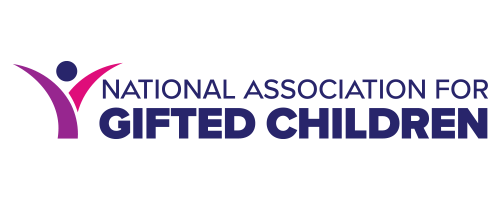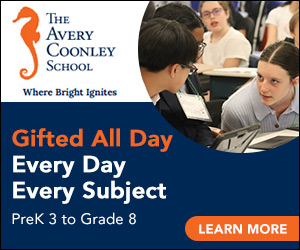Curiosity Collected: How Compassion and Creativity Shape Gifted Learning
By Dr Yvonne de St Croix, Creativity Network Chair
Every autumn in Connecticut, as the air turns crisp and the leaves brighten into fiery shades of orange and red, families, teachers, and students look forward to a special tradition: the regional science fairs. Among the many categories, one of the most beloved is Collections. Students proudly display seashells, rocks, coins, or bottle caps—ordinary objects elevated by care, curiosity, and personal meaning.
On the surface, these projects may seem modest. But for educators, they illustrate a powerful principle: learning takes root when it grows from a student’s interests. A collection reflects the sparks of curiosity that drive a child to notice details, find patterns, and communicate what excites them. In gifted education, this is exactly what differentiation through interests seeks to honor.
The collections category offers more than a display of objects; it represents the start of authentic inquiry. A student who lines up rocks by size may later notice patterns in texture and color, leading to questions about geology. A child with a collection of pressed leaves might begin to ask about climate, growth, or ecological preservation. What looks like “just a collection” is often the first step toward scientific reasoning. For educators, this becomes a powerful metaphor: the best instruction starts not with what is handed down, but with what is collected from student passion.
Compassion as a Framework for Growth
This truth aligns with the message I shared at the 2025 World Council for Gifted and Talented Children (WCGTC) conference: what seems impossible today becomes tomorrow’s possibility when fueled by compassion and creativity.
The Muhammad Ali Center’s 2025 Compassion Report outlines five interconnected “layers of compassion:” compassion for self, individuals, groups, local areas, and nations. These layers provide an actionable model for educators working with advanced learners. Gifted children often experience heightened sensitivities and asynchronous development. Embedding compassion into instruction validates their social-emotional needs and expands their ethical engagement with the world. Compassion becomes more than a personal virtue—it is an educational strategy for fostering resilience, belonging, and leadership.
When teachers differentiate by interest, they model compassion by valuing what matters to students. A collection of coins or shells is not trivial; it is evidence of what a child finds worth noticing. Honoring that curiosity communicates that students’ passions are legitimate.
Compassion, then, becomes more than an emotion—it is a pedagogical stance.
Creativity as the Engine of Possibility
Creativity is not a peripheral skill; it is the engine that transforms impossibility into innovation. In gifted education, creativity must be nurtured deliberately and systematically. Torrance’s pioneering research reminds us that divergent thinking is central to problem-solving, while more recent studies highlight the role of creativity in well-being, motivation, and academic success.
- Cognitive Dimension: Hartsell (2023) frames creativity as a tool for adaptive problem-solving, emphasizing that students who learn to think flexibly are better equipped to address complex global challenges.
- Emotional Dimension: Özbey and Sarçam (2021) show how creative engagement supports emotional regulation and resilience, particularly important for gifted students who experience heightened intensity.
- Ethical Dimension: Chowkase and Watve (2024) argue that when combined with compassion, creativity directs gifted learners toward purpose-driven contributions, ensuring that talent is harnessed for collective good.
Creativity is also practical—it shows up in the day-to-day structures of classrooms. When teachers provide multiple pathways to learning, open-ended assignments, and opportunities for synthesis, they invite students to combine knowledge into new forms. Collections highlight how creativity emerges from student passion. A child who spends hours classifying bottle caps is practicing pattern recognition, aesthetic judgment, and storytelling. These are the same skills that underlie scientific discovery, artistic innovation, and entrepreneurial problem-solving.
For example, at IDEAL4Gifted, integrity is evident in the way compassion and creativity are woven seamlessly into teaching and learning. As Dr. Mary Grace Stewart explains, all students participate in art and creative problem-solving classes, assessments provide multiple ways to “show what you know,” and teachers adapt lessons for each individual. Assignments are open-ended, independent investigations are personal and passionate, and enrichment clusters emphasize collaboration and innovation. In this environment, risk-taking and imaginative thinking are reframed as essential to growth. This illustrates how integrity in practice means aligning philosophy with implementation—ensuring that values like compassion and creativity are lived out daily in classrooms..
Why “Impossible” Doesn’t Last
Case studies across educational contexts illustrate that impossibility is rarely permanent. A mathematically gifted student who initially struggles with executive functioning can flourish when scaffolded with flexible assessments. Twice-exceptional learners once excluded from enrichment programs demonstrate extraordinary contributions when provided equitable
access and compassionate mentoring. Communities with limited resources often develop grassroots partnerships that open opportunities previously considered unattainable.
In each instance, the impossible dissolves when we differentiate with compassion and creativity, meeting students where their interests lie.
A Professional Call to Action
For practitioners, researchers, and advocates in gifted education, the message is threefold:
1. Compassion must be operationalized. It cannot remain an abstract concept; it must be integrated into curriculum design, assessment practices, and teacher training. Compassion ensures that gifted learners’ social-emotional needs are prioritized alongside their academic
growth, particularly for those whose heightened sensitivities can otherwise make them feel out of place.
2. Creativity must be prioritized. Beyond enrichment, it must be viewed as a core competency that sustains innovation and resilience in the face of educational and societal challenges. Creativity, at the level of synthesis, pushes students beyond memorization into designing, imagining, and building. When students learn to transform knowledge into something new, they gain both the skills and confidence needed to approach complexity with vision.
3. Student voice must be invited and included. Ask learners directly what supports from teachers help them develop compassionate, curious, and creative work. Their answers often point to strategies that adults may overlook: more choice, flexible timelines, real-world connections, collaborative brainstorming, or space to reflect quietly before sharing. These insights can be “collected,” much like artifacts in a fair project, and then woven into the broader tapestry of instructional methods. By listening deeply to students, we affirm their agency and co-create learning environments that reflect their lived experience and aspirations.
Together, these approaches affirm that curiosity collected is more than a pastime—it is a
pathway. Just as a child’s collection can become a catalyst for lifelong inquiry, our work as educators can transform fleeting sparks of interest into enduring possibility. Compassion, creativity, integrity, and student voice ensure that equity and excellence are not competing goals, but shared outcomes within reach for every learner.
References
Chowkase, A. A., & Watve, S. (2024). Compassion and creativity as dual engines of gifted education. Journal of Gifted Education Research, 37(2), 112–127.
Hartsell, B. (2023). Creativity as adaptive problem-solving in gifted learners. Gifted Child Today, 46(1), 15–25. https://doi.org/10.1177/10762175221148882
Muhammad Ali Center. (2025). The 2025 compassion report. https://aliindex.org/wp-content/uploads/2025/01/The-2025-Compassion-Report.pdf
Özbey, A., & Sarçam, H. (2021). The role of creativity in academic engagement and well-being among gifted students. Creativity Studies, 14(3), 451–463. https://doi.org/10.3846/cs.2021.14712
Torrance, E. P. (1974). Torrance tests of creative thinking: Norms-technical manual. Scholastic Testing Service.


